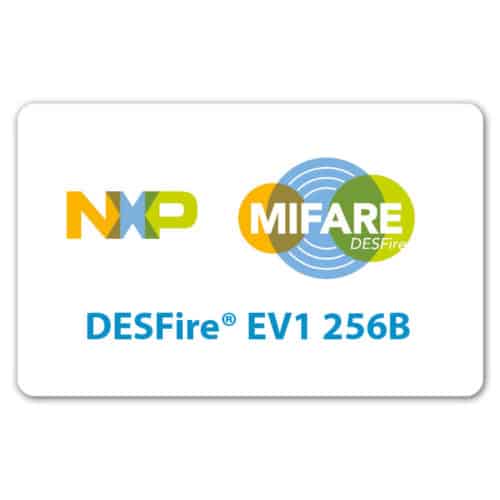A Physical Unclonable Function (PUF) (sometimes also called physically unclonable function, which refers to a weaker security metric than a physical unclonable function) is a device that exploits inherent randomness introduced during manufacturing to give a physical entity a unique ‘digital fingerprint’ or trust anchor. These devices are of potential use in a variety of applications from anti-counterfeiting, identification, authentication and key generation to advanced protocols such as oblivious transfer, key exchange, key renovation and virtual proof of reality. PUFs are most often based on unique physical variations which occur naturally during semiconductor manufacturing. A PUF is a physical entity embodied in a physical structure. Today, PUFs are usually implemented in integrated circuits and are typically used in applications with high security requirements, more specifically cryptography.
History
Early references about systems that exploit the physical properties of disordered systems for authentication purposes date back to Bauder in 1983[1] and Simmons in 1984.Naccache and Frémanteau provided an authentication scheme in 1992 for memory cards. The terms POWF (physical one-way function) and PUF (physical unclonable function) were coined in 2001 and 2002, the latter publication describing the first integrated PUF where, unlike PUFs based on optics, the measurement circuitry and the PUF are integrated onto the same electrical circuit (and fabricated on silicon).
Starting in 2010, PUF gained attention in the smartcard market as a promising way to provide “silicon fingerprints”, creating cryptographic keys that are unique to individual smart cards.
PUFs are now established as a secure alternative to battery-backed storage of secret keys in commercial FPGAs, such as the Xilinx Zynq Ultrascale+, and Altera Stratix 10.
Concept
PUFs depend on the uniqueness of their physical microstructure. This microstructure depends on random physical factors introduced during manufacturing. These factors are unpredictable and uncontrollable, which makes it virtually impossible to duplicate or clone the structure.
Rather than embodying a single cryptographic key, PUFs implement challenge–response authentication to evaluate this microstructure. When a physical stimulus is applied to the structure, it reacts in an unpredictable (but repeatable) way due to the complex interaction of the stimulus with the physical microstructure of the device. This exact microstructure depends on physical factors introduced during manufacture which are unpredictable (like a fair coin). The applied stimulus is called the challenge, and the reaction of the PUF is called the response. A specific challenge and its corresponding response together form a challenge–response pair or CRP. The device’s identity is established by the properties of the microstructure itself. As this structure is not directly revealed by the challenge–response mechanism, such a device is resistant to spoofing attacks.
Using a fuzzy extractor or the fuzzy commitment scheme that are provably suboptimal in terms of storage and privacy leakage amount or using nested polar codes that can be made asymptotically optimal, one can extract a unique strong cryptographic key from the physical microstructure. The same unique key is reconstructed every time the PUF is evaluated. The challenge–response mechanism is then implemented using cryptography.
PUFs can be implemented with a very small hardware investment. Unlike a ROM containing a table of responses to all possible challenges, which would require hardware exponential in the number of challenge bits, a PUF can be constructed in hardware proportional to the number of challenge and response bits. In some cases PUFs can even be built from existing hardware with the right properties.
Unclonability means that each PUF device has a unique and unpredictable way of mapping challenges to responses, even if it was manufactured with the same process as a similar device, and it is infeasible to construct a PUF with the same challenge–response behavior as another given PUF because exact control over the manufacturing process is infeasible. Mathematical unclonability means that it should be very hard to compute an unknown response given the other CRPs or some of the properties of the random components from a PUF. This is because a response is created by a complex interaction of the challenge with many or all of the random components. In other words, given the design of the PUF system, without knowing all of the physical properties of the random components, the CRPs are highly unpredictable. The combination of physical and mathematical unclonability renders a PUF truly unclonable.
Note that a PUF is “unclonable” using the same physical implementation, but once a PUF key is extracted, there’s generally no problem to clone the key – the output of the PUF – using other means.
Because of these properties PUFs can be used as a unique and untamperable device identifier. PUFs can also be used for secure key generation and storage as well as for a source of randomness.
Types
Error correction
In many applications it is important that the output is stable. If the PUF is used for a key in cryptographic algorithms it is necessary that error correction be done to correct any errors caused by the underlying physical processes and reconstruct exactly the same key each time under all operating conditions. In principle there are two basic concepts: Pre-Processing and Post-Processing Error Correction.
Strategies have been developed which lead SRAM PUF to become more reliable over time without degrading the other PUF quality measures such as security and efficiency.
Research at Carnegie Mellon University into various PUF implementations found that some error reduction techniques reduced errors in PUF response in a range of ~70 percent to ~100 percent.
Research at the University of Massachusetts Amherst to improve the reliability of SRAM PUF-generated keys posited an error correction technique to reduce the error rate.
Joint reliability–secrecy coding methods based on transform coding are used to obtain significantly higher reliabilities for each bit generated from a PUF such that low-complexity error-correcting codes such as BCH codes suffice to satisfy a block error probability constraint of 1 bit errors out of 1 billion bits.
Nested polar codes are used for vector quantisation and error correction jointly. Their performance is asymptotically optimal in terms of, for a given blocklength, the maximum number of secret bits generated, minimum amount of private information leaked about the PUF outputs, and minimum storage required. The fuzzy commitment scheme and fuzzy extractors are shown to be suboptimal in terms of the minimum storage.
Availability
- PUF technology can be licensed from several companies including eMemory, or its subsidiary, PUFsecurity, Enthentica, ICTK, Intrinsic ID, Invia, QuantumTrace and Verayo.
- PUF technology has been implemented in several hardware platforms including Microsemi SmartFusion2, NXP SmartMX2, Coherent Logix HyperX, InsideSecure MicroXsafe, Altera Stratix 10, Redpine Signals WyzBee and Xilinx Zynq Ultrascale+.
Vulnerabilities
In 2011, university research showed that delay-based PUF implementations are vulnerable to side-channel attacks and recommends that countermeasures be employed in the design to prevent this type of attack. Also, improper implementation of PUF could introduce “backdoors” to an otherwise secure system. In June 2012, Dominik Merli, a scientist at Fraunhofer Research Institution for Applied and Integrated Security (AISEC) further claimed that PUF introduces more entry points for hacking into a cryptographic system and that further investigation into the vulnerabilities of PUFs is required before PUFs can be used in practical security-related applications. The presented attacks are all on PUFs implemented in insecure systems, such as FPGA or Static RAM (SRAM). It is also important to ensure that the environment is suitable for the needed security level.
In 2015, some studies claimed it is possible to attack certain kinds of PUFs with low-cost equipment in a matter of milliseconds. A team at Ruhr Universität of Bochum, Germany demonstrated a method to create a model of XOR Arbiter PUFs and thus be able to predict their response to any kind of challenge. Their method requires only 4 CRPs which even on resource constrained devices should not take more than about 200ms to produce. Using this method and a $25 device or an NFC-enabled smartphone, the team was able to successfully clone PUF-based RFID cards stored in the wallet of users while it was in their back pocket.
Provable machine learning attacks
The attacks mentioned above range from invasive, e.g., to non-invasive attacks. One of the most celebrated types of non-invasive attacks is machine learning (ML) attacks. From the beginning of the era of PUFs, it has been doubted if these primitives are subject to this type of attacks. In the lack of thorough analysis and mathematical proofs of the security of PUFs, ad hoc attacks against PUFs have been introduced in the literature. Consequently, countermeasures presented to cope with these attacks are less effective. In line with these efforts, it has been conjectured if PUFs can be considered as circuits, being provably hard to break. In response, a mathematical framework has been suggested, where provable ML algorithms against several known families of PUFs have been introduced.
Along with this provable ML framework, to assess the security of PUFs against ML attacks, property testing algorithms have been reintroduced in the hardware security community and made publicly accessible. These algorithms trace their roots back to well-established fields of research, namely property testing, machine learning theory, and Boolean analysis.
ML attacks are possible to apply to PUFs also because majority of the pre- and post-processing methods applied until now ignore the effect of correlations between PUF-circuit outputs. For instance, obtaining one bit by comparing two ring oscillator outputs is a method to decrease the correlation. However, this method does not remove all correlations. Therefore, the classic transforms from the signal-processing literature are applied to raw PUF-circuit outputs to decorrelate them before quantizing the outputs in the transform domain to generate bit sequences. Such decorrelation methods can help to overcome the correlation based information leakages about the PUF outputs even if the ambient temperature and supply voltage change.
Related Products
Related Articles
NXP Semiconductors Presents the MIFARE SAM AV3
Securing Connected Systems with NXP Semiconductors More and more of daily life has become contactless. As we navigate through our lives, people around the world use devices like smartphones, wearables and smart cards to do things like pay for purchases,
IDEMIA, G+D and NXP Launch WLA to Offer Smart Card and Online Payment Firms an Independent Contactless Payment Standard
March 11, 2021 -- MUNICH, Germany -- The White Label Alliance (WLA) was formed in response to increasing global demand for next-generation, independent payment solutions. WLA consolidates and sets independent standards for contact and contactless smart cards, mobile and other
NXP, Mastercard, and Xiaomi Expand Global Reach for Mobile Payments into Europe
July 18, 2020 -- NXP Semiconductors (NASDAQ:NXPI), Mastercard, and Xiaomi Inc. today announced they are bringing more convenient and secure contactless experiences to Russia as the first phase of a European-wide roll-out with NXP's mobile wallet solution. Powering mobile payments for
NXP Introduces MIFARE DESFire EV3 IC, Ushers In New Era of Security and Connectivity for Contactless Smart City Services
June 02, 2020 09:00 ET Service providers and end users can benefit from convenient and reliable contactless access and payment solutions Enhanced feature set increases security for smart city installations Mobile and multi-application support allow service providers to collaborate in
CardLogix Expands Applet Support for NXP JCOP 4 Java Cards
IRVINE, CA, October 11, 2019 – CardLogix is preparing clients for the official release of NXP’s latest generation Java Card OS, JCOP 4, smart cards with custom applet development and existing applet support. CardLogix helps software developers create applets
NXP Takes Melbourne Transit (myki) Mobile with Google Pay Integration for Trains, Buses and Trams
MELBOURNE, Australia, March 27, 2019 -- NXP Semiconductors N.V. (NASDAQ:NXPI) today announced that the Public Transport Victoria (PTV) network in Australia implemented NXP’s end-to-end MIFARE 2GO cloud service with Google Pay to take its myki transit card mobile. Deployed by




